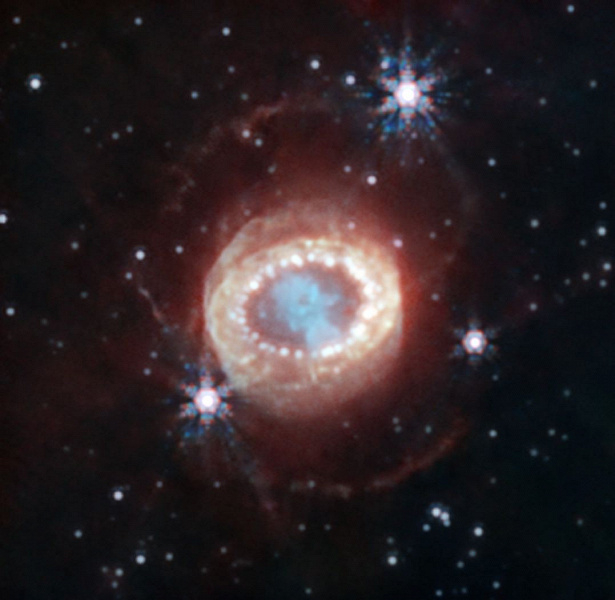How aerodynamic processes explain ghostly structure in space
After Supernova 1987a, astronomers predicted what it might look like in a few years. They suggested that a new pulsar would soon appear, and many said that the expanding gas cloud would encounter earlier material ejected by the star. The impact should have illuminated the area around the event.
The light from Supernova 1987a reached Earth on February 23, 1987. The original star SN 1987A was located about 168,000 light-years from Earth in the Large Magellanic Cloud. Her Type II flare — the first in modern times to show astronomers details of a core collapse supernova. Since then, astronomers have followed the spread of a ring of propagating material from the flare itself, which collided with previously ejected material as the star expanded. As a result, after the death of the star, a neutron star was formed, which astronomers discovered in 2019 and observed using X-ray and gamma-ray observatories.
A few months after the explosion, astronomers used the Hubble Space Telescope to photograph the bright rings surrounding the explosion. These rings are composed of material spread by the progenitor stellar wind. Ultraviolet radiation ionized the gas in the cloud. The inner ring is about 2/3 of a light year away from the original star, and an expanding outburst collided with the ring in 2001, heating it up even more and causing the shock wave to travel beyond the rings and leave behind pockets of warm dust and glowing clouds of gas. As a result of the turbulence of this shock wave and the impact on the areas of the inner ring, ghostly «pearls» appeared.
Astronomers have proposed using the Rayleigh-Taylor instability to explain the observations. This phenomenon occurs when two liquids (or plasmas) of different densities interact with each other. For 1978a, a denser «liquid» — it is material ejected during a supernova explosion. It collides with a less dense cloud of material — ejected shell of an expanding star. University of Michigan graduate student Michael Vadas notes that this type of instability could explain the formation of a “string of pearls.” Supernova 1987a.
«Rayleigh-Taylor instability may indicate the possible presence of clumps, but it will be very difficult to determine their number», — notes Vadas in his recently published paper in the journal Physical Review Letters. An analogy for this instability is the vortex interaction of an airplane wing with the contrail of its engine. The vortices flow into each other, creating shapes that can be predicted.
To delve deeper into their approach, Vadas and his colleagues modeled how wind pushes a cloud while simultaneously dragging it along the surface. As a result, the top and bottom of the cloud were pushed out faster than the middle. This caused the cloud to collapse, causing the Rayleigh-Taylor instability, which broke the cloud into 32 even clumps, similar to a «strand of pearls» SN 1987A, which has 30-40 clumps.
This predictable number of lumps was the reason the team proposed the Rayleigh-Taylor instability as the basis for the formation of the “string of pearls.” They also think it could help predict the formation of more rings around the site of an outburst or as protoplanetary dust clumps around a star. Recent infrared images from the James Webb Space Telescope show new clumps appearing in the ring. Astronomers will continue observations to see — whether new clumps will appear in the future.

